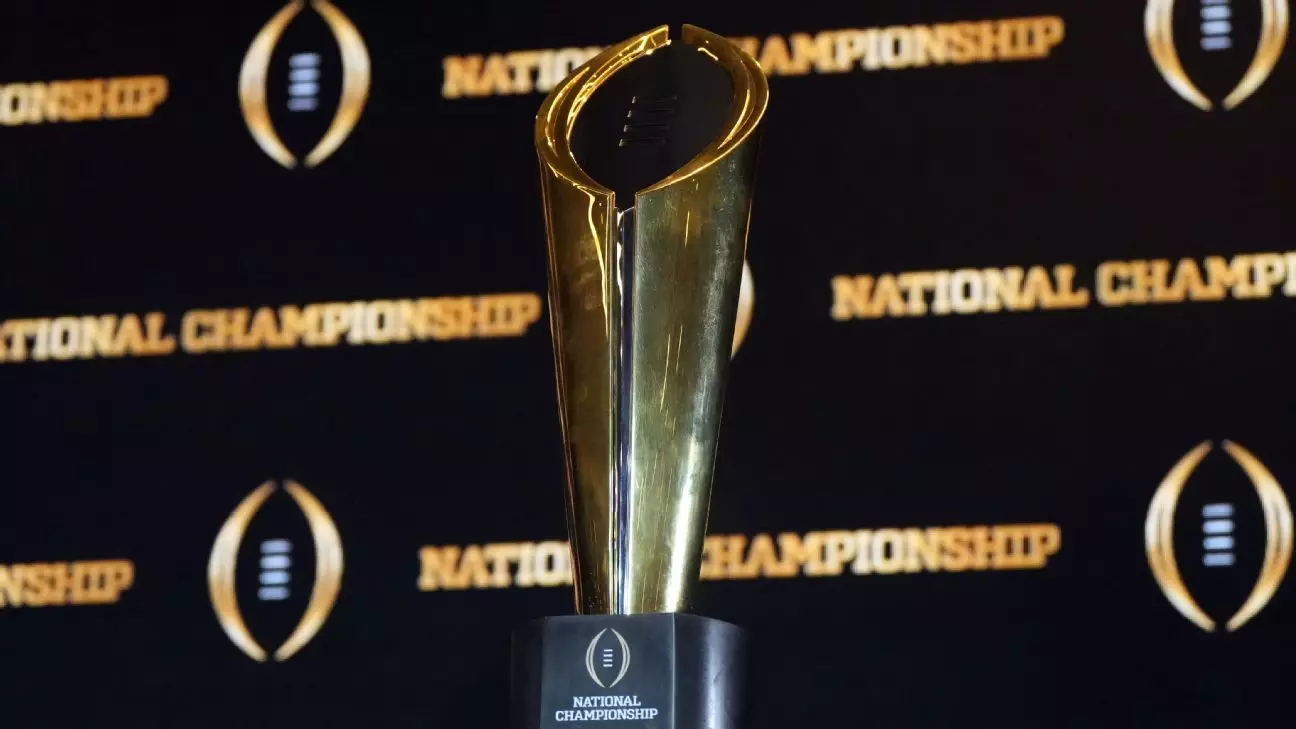The scheduling of New Year’s bowl games is always a complex undertaking, but this year’s College Football Playoff (CFP) has revealed deeper issues than just logistics and fan arrangements. The ongoing dialogue, sparked by SEC commissioner Greg Sankey, concerning the scheduling of the Goodyear Cotton Bowl Classic and the Capital One Orange Bowl features themes of fairness, safety, and responding to unforeseen events. These elements not only illustrate the challenges of playoff logistics but also highlight the inherent complexities of college football as a sport.
In a recent turn of events, Greg Sankey made headlines when he requested a potential change in timing for two significant bowl games. His primary concern stemmed from the uneven rest periods two competing teams—Notre Dame and Penn State—would face heading into their matchup at the Capital One Orange Bowl. Following an intense victory over Georgia in the Allstate Sugar Bowl, Notre Dame’s quick turnaround has raised questions about the fairness of the playoffs, emphasizing the need to consider not just wins and losses, but the health and performance capabilities of student-athletes.
The concern reflects a growing awareness that, in a competitive arena, every detail counts. As Sankey noted, the unequal rest days could disadvantage Notre Dame, compelling the commission’s involvement in search of a fair solution. However, upon closer inspection, the feasibility of changing the established schedule proved to be an uphill battle.
CFP executive director Rich Clark promptly dismissed the possibility of changing game times, citing the complexities of logistics involved in altering schedules that have already been finalized. Clark stated that altering game times could disrupt travel arrangements for fans and pose challenges to the teams involved in other bowl games. This underscores the reality that, while concerns for athlete welfare are paramount, the intricacies of logistical arrangements cannot be ignored without cascading consequences.
The discussion surrounding scheduling is a microcosm of broader issues within college athletics, including the balance between competitive integrity and logistical feasibility. Sankey’s acknowledgment of the issues arising from the unfortunate tragedy in New Orleans, which led to adjustments in game timing for safety and security, only adds depth to an already nuanced conversation. The human aspect of these logistics is significant; tragedies call for swift adaptation, demonstrating the need for sensitivity in decision-making.
Moreover, fans leave an imprint on these discussions that cannot be overlooked. Many fans travel long distances to attend bowl games, planning their trips well in advance based on the original game schedules. Disruptions to a carefully arranged calendar could lead to dissatisfaction among supporters and blemish the communal experience that college football aims to portray. Clark’s comments on fan logistics and community arrangements highlight that the implications of scheduling decisions echo beyond the field, impacting families, communities, and the local economy tied to game day festivities.
In the case of the college football playoff, every decision holds the potential to sway not just competition standings but also public sentiment and relationships within local and national sports cultures. With dedicated fan bases like those of Texas or Ohio State shaping the fabric of college football, the relationship between administrative decisions and grassroots impact necessitates thorough consideration.
Both Sankey and Clark offered insights on the overarching need for adaptability—a quality any team must embrace during a game—yet such flexibility in scheduling reveals the often rigid structure within which collegiate athletics operate. The balance between ensuring fairness for competitors and maintaining public trust hinges on transparent communication and thoughtful reflection in the face of unexpected challenges.
Ultimately, the discourse surrounding the timeliness of the College Football Playoff games is indicative of larger themes at play in sports: the intertwining of athletic performance, community engagement, and administrative responsibility. The necessity for vigilance in planning and responsiveness to emergencies are lessons that resonate deeply within the larger narrative of college football itself, illustrating that behind the spectacle are layers of consideration that merit ongoing dialogue among all stakeholders involved. As the football season progresses, it remains essential for decision-makers to navigate these intricacies while keeping fairness and athlete welfare at the forefront of their priorities.

Leave a Reply